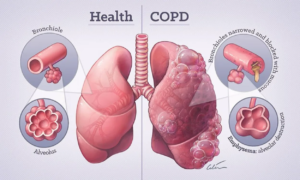Nurses: the unsung heroes of healthcare, tirelessly dedicating themselves to the well-being of others. But who takes care of them? Let’s delve into the world of compression socks and discover how they can be a game-changer for nurses’ comfort and health.
Understanding the Strain on Nurses
The life of a nurse is demanding, both physically and emotionally. Endless hours on their feet, rushing from one patient to another can take a toll on their bodies, particularly their legs. The constant standing leads to pain, swelling, and fatigue, leaving nurses vulnerable to various foot problems.
Why Nurses Are at Risk
Nursing isn’t just a profession; it’s a commitment to long shifts and minimal breaks. Studies reveal alarming statistics: some nurses go hours without sitting or eating during their shifts. Extended work hours not only affect their physical well-being but also impair cognitive function, leading to errors and occupational injuries.
The Perils of Prolonged Standing
Standing for extended periods can wreak havoc on the body. It disrupts blood circulation, causing veins to work against gravity, leading to increased pressure and stress. This strain can result in various health issues, including heart disease and chronic venous insufficiency.
Common Risks Faced by Nurses
- Plantar Fasciitis: Overuse of the ligament in the sole leads to stabbing pain and inflammation.
- Edema: Swelling of the legs due to poor circulation, causing discomfort and pain.
- Blisters: Friction from constant movement can result in painful fluid-filled blisters.
- Heel Spurs: Bony growths on the heel causing intense pain, aggravated by prolonged standing.
- Shin Splints: Irritation and pain in the lower legs due to overworking muscles.
- Athlete’s Foot: Fungal infection thrives in warm, damp environments, common among nurses wearing tight shoes.
Enter Compression Socks: Nurses’ Guardian Angels
Compression socks emerge as a simple yet effective solution to alleviate the woes of nurses’ tired feet. Let’s explore the myriad benefits they offer.
The Benefits of Compression Socks for Nurses
- Reduces Leg Fatigue and Soreness: Enhances blood circulation, alleviating discomfort and pain.
- Provides Relief from Lymphedema: Aids in reducing swelling by promoting proper lymphatic function.
- Soothes Varicose and Spider Veins: Improves blood flow, preventing vein-related issues.
- Reduces DVT Risk: Helps in preventing blood clots by facilitating healthy circulation.
- Promotes Tissue Regeneration: Facilitates the healing process for damaged tissues.
- Enhances Overall Comfort: Combats discomfort, ensuring a pain-free workday.
Why ‘Copper’ Compression Socks Shine Bright
Copper-infused compression socks elevate the game by offering additional benefits tailored to nurses’ needs.
The Superiority of Copper Compression Socks
- Anti-odour: Combats foot odour, keeping feet fresh throughout the day.
- Anti-inflammatory: Reduces inflammation, soothing tired muscles and joints.
- Anti-microbial: Fights off bacteria and fungi, promoting foot hygiene.
- Long-lasting Freshness: Ensures prolonged freshness, even during intense activities.
How Compression Socks Work Their Magic
Compression socks work by applying gentle pressure on the legs, aiding blood flow and reducing swelling. They act as a support system for the veins, preventing blood from pooling in the legs during prolonged standing.
Finding the Perfect Fit: Compression Levels Decoded
Choosing the right compression level is essential for nurses to reap maximum benefits without discomfort.
Ideal Compression Levels for Nurses
- 15-20 mmHg: Provides gentle support for daily wear, suitable for extended shifts.
- 20-30 mmHg: Offers firmer compression, ideal for those requiring additional support.
Safety First: Debunking Compression Sock Myths
Contrary to common misconceptions, compression socks are safe for most individuals when worn correctly.
Addressing Concerns
- Skin Sensitivity: Individuals with delicate skin should exercise caution.
- Proper Usage: Ensure correct sizing and wearing technique to prevent discomfort.
Beyond Compression Socks: Holistic Foot Care Tips for Nurses
While compression socks work wonders, incorporating holistic foot care practices can further enhance nurses’ well-being.
Self-care Strategies for Happy Feet
- Stretching: Regular stretching to alleviate muscle stiffness.
- Icing: Applying ice to soothe sore muscles post-shift.
- Massage: Using massage techniques to improve blood circulation.
- Elevation: Elevating feet to reduce inflammation and promote circulation.
- Pampering: Treating feet to pedicures or massages for relaxation and rejuvenation.
Conclusion: Prioritizing Nurses’ Well-being, One Step at a Time
Nurses are the backbone of healthcare, tirelessly catering to others’ needs. It’s high time they receive the care and attention they deserve. By embracing compression socks for nurses and adopting a holistic approach to foot care, nurses can stride confidently through their shifts, knowing that their well-being is safeguarded. After all, healthy feet make for happier nurses, ensuring top-notch care for all.
Let’s continue the discussion: How do you prioritize self-care during demanding work shifts? Share your tips and experiences below!
SEE ALSO:
EXPLORING YOUR OPTIONS: FINDING THE PERFECT BOTOX CLINIC NEAR YOU





